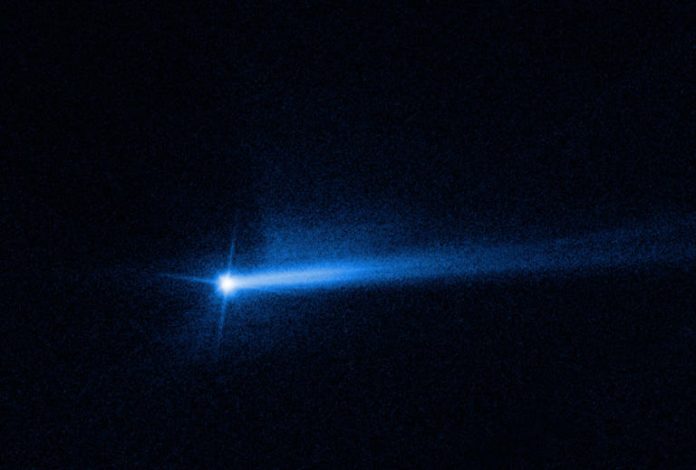NASA made history on September 26th when it intentionally crashed a spacecraft into an asteroid about 6.8 million miles from Earth. The Double Asteroid Redirection Test aka DART spacecraft traveled at 14,000 miles an hour into the asteroid Dimorphos.
It took 10 months for the SpaceX-launched DART vehicle to travel to crash into the asteroid’s surface.
Space scientists continue closely studying the mission results.
Astronomers captured the first images in real time. And they showed an estimated 6,200-mile comet-like trail.
The impact from the collision created tons of space dust and debris that was blown off the surface of the asteroid.
After three weeks of observation, the latest Hubble Space Telescope images show the Didymos-Dimorphos asteroid system now has two comet-like tails.
NASA gives an update
NASA released a statement on its website Thursday that gives an updated view of the DART crash experiment.
“Repeated observations from Hubble over the last several weeks have allowed scientists to present a more complete picture of how the system’s debris cloud has evolved over time. The observations show that the ejected material, or “ejecta,” has expanded and faded in brightness as time went on after impact, largely as expected. The twin tail is an unexpected development, although similar behavior is commonly seen in comets and active asteroids. The Hubble observations provide the best-quality image of the double-tail to date”
DART for planetary defense
NASA’s bold DART experiment was to see whether it’s possible to use this method to deflect future asteroids and other space rocks that pose a threat to Earth. The DART spacecraft mission crashing into the asteroid was the first step in designing practice for saving Earth.










